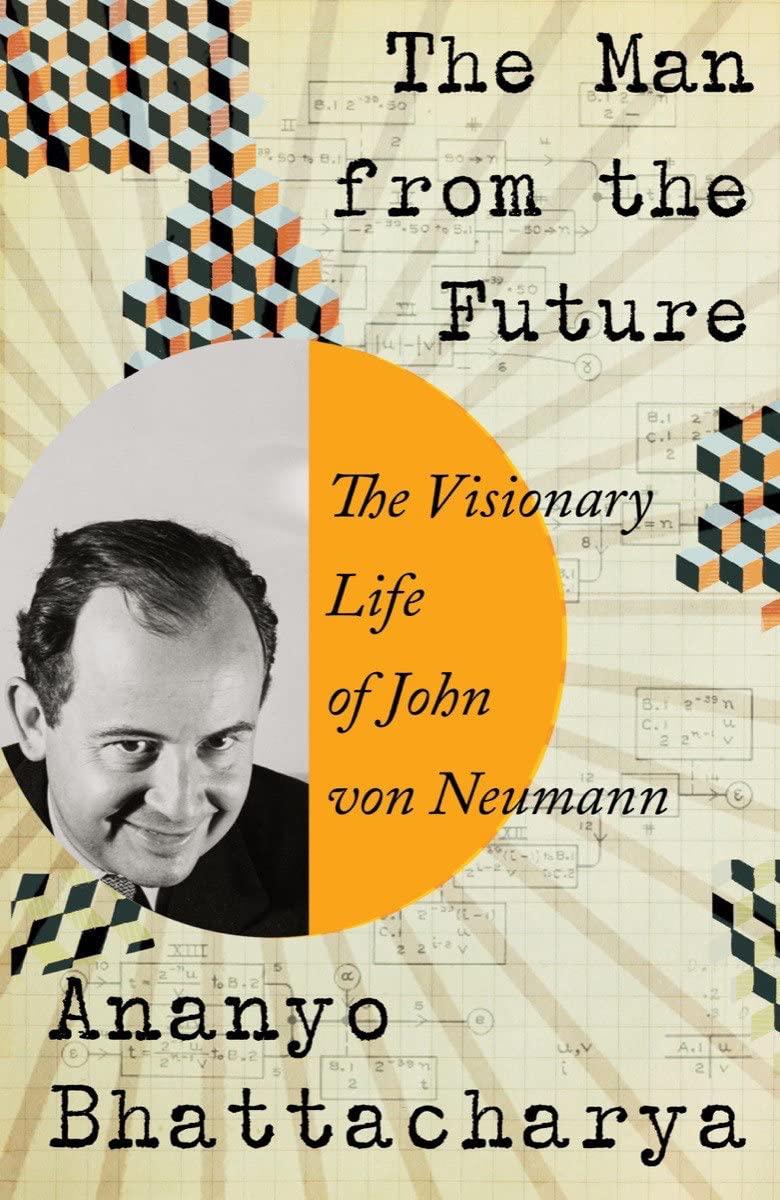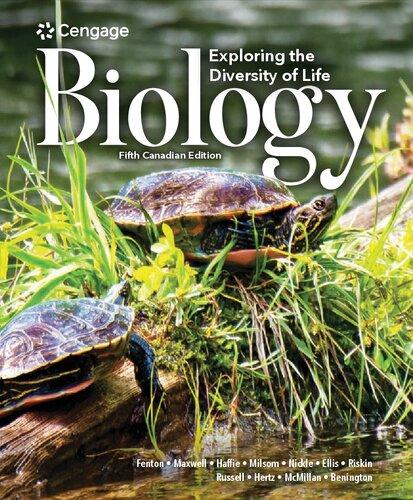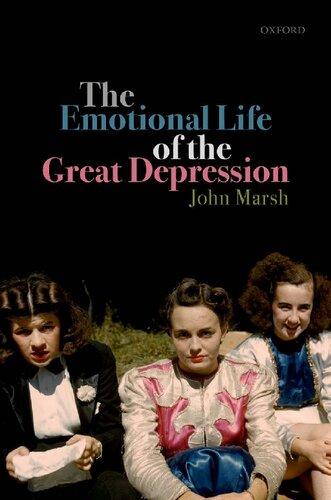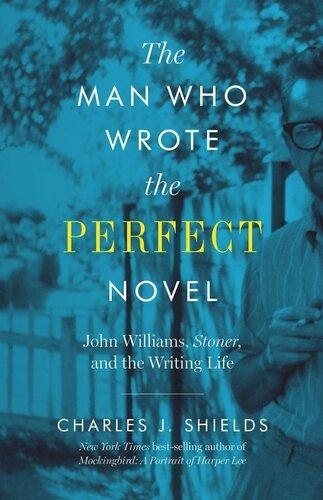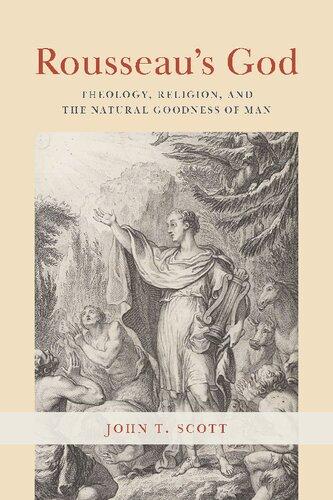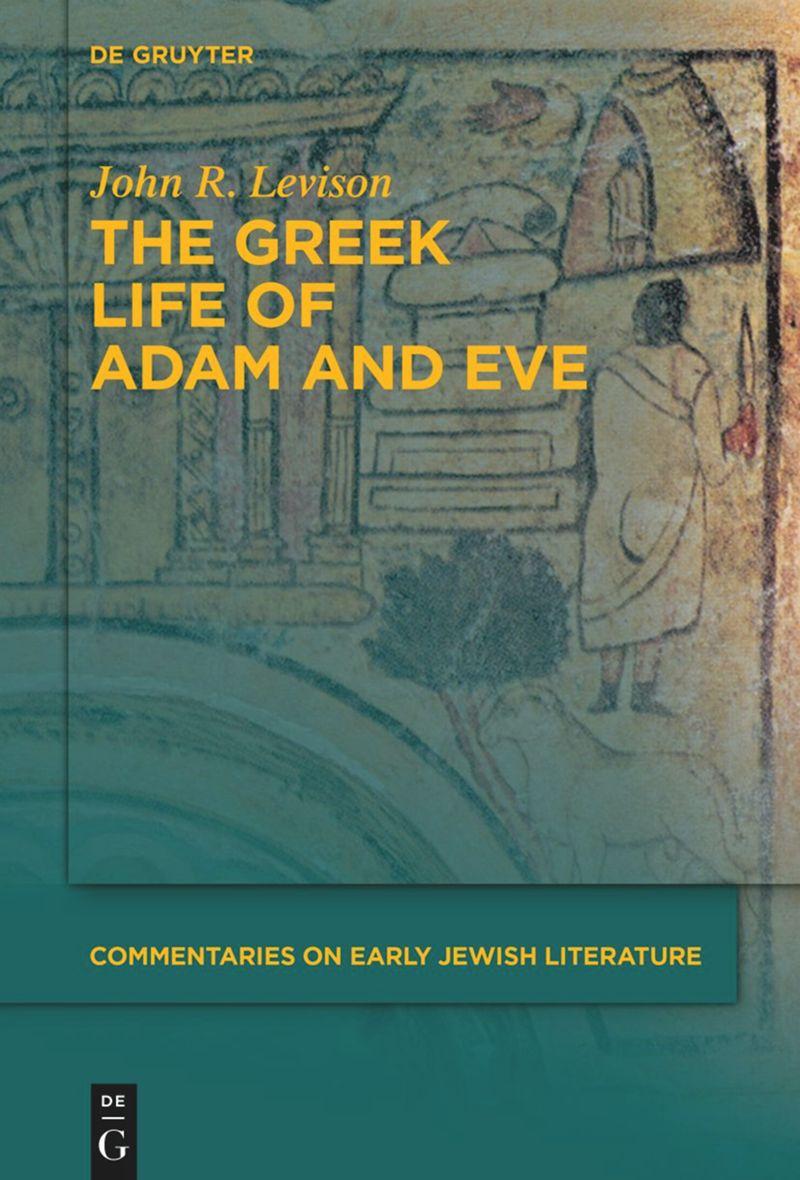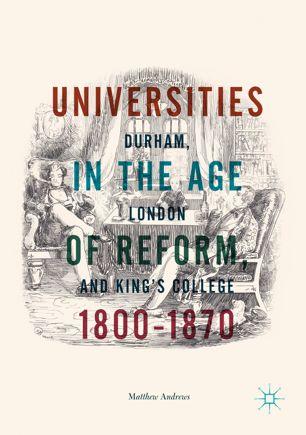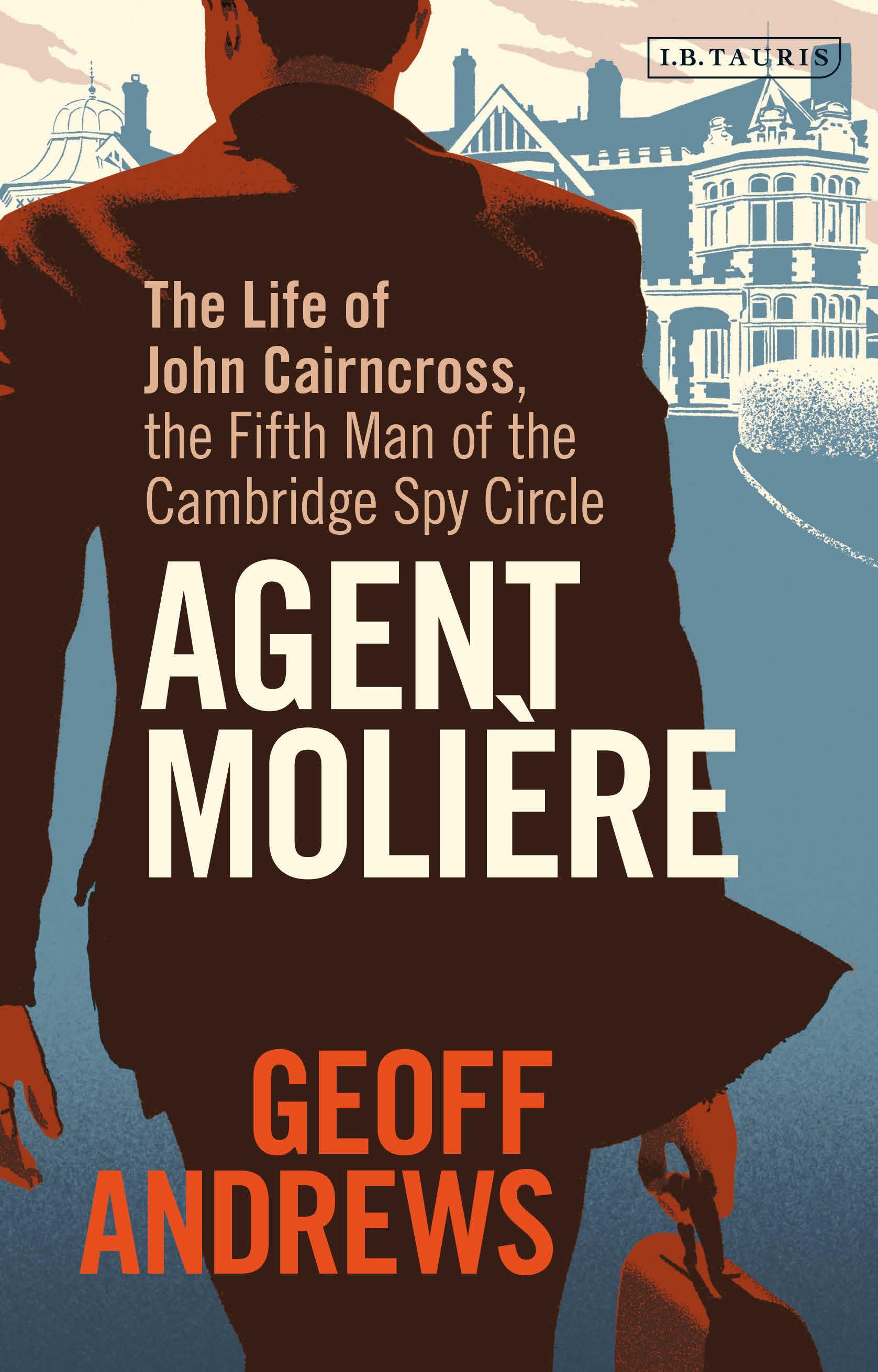Acknowledgements
Following the publication of my previous book, The Shadow Man, a biography of James Klugmann, the Cambridge communist who recruited John Cairncross to work for the Soviets, I met Gayle Brinkerhoff, Cairncross’s widow, who told me about her life with him. I was intrigued and decided to look more into his background. It seemed to me that existing accounts, particularly those from journalists and so-called molehunters, did not really ‘get’ John Cairncross at all: they often misunderstood or misrepresented his motivations, distorted his Scottish background and attributed to him political ideas that he did not hold. Above all, he suffered in comparison to the other four members of the Cambridge spy circle. Assumptions made about them were inevitably applied to him, but in doing so often obscured the important facts of his life before, during and after his period as a Soviet agent. As I researched his life, Gayle was always supportive, providing access to papers as well as contacts and contributing ideas and reflections, but never obstructive; we agreed early on that I would do the biography entirely in my own way. Gayle and David Gow have been very generous with their time throughout the writing of the book, and I’m very grateful to them for suggestions and pointers along the way.
Similar gratitude is due to the Cairncross family, who provided me with further insight, reflections and permission to use family correspondence and papers. I am particularly grateful to David Cairncross for clarifying points and reading over sections and Frances Cairncross for permission to use her father’s papers and for passing on miscellaneous correspondence. Philip Cairncross and Sandy Cairncross made helpful suggestions on later drafts.
Former friends and colleagues of John Cairncross were invaluable during the research for this book, and I am particularly grateful to David
Rubin for reflecting on his friendship with Cairncross (including his estimation of him as a scholar) and for sharing some of his expertise of French literature. Thanks are due to Allan Evans for sending me his memoir of John Cairncross in Rome and telling me of Cairncross’s connection with Frances Keene. Declan and Jeannette Walton were excellent hosts and generous in reminiscing about their time with John and Gabi Cairncross in Rome and Geneva, and I benefited from their constant interest and encouragement.
They also set me on the trail of other former FAO colleagues in Rome, Kay Killingsworth and Silvia Balit, who recounted not only her memories of John but also the earlier friendship between him and her parents. While in Rome, I was fortunate to meet Fiorenzo Niccoli, one of Cairncross’s old friends in Parioli, who spoke of their times together, including their unofficial membership of the Parioli dog-walking circle. It was a pleasure to collaborate with Marco Zatterin of La Stampa, who was generous with his time and contacts. Nick Parmée told me more about his father, Douglas Parmée, Cairncross’s best friend at Cambridge, over a convivial lunch at the French House in Soho.
Richard Norton-Taylor has been supportive and encouraging from the start of this project. I am grateful to Richard Davenport-Hines for advice and suggestions; he continues to set a formidable example for any historian and biographer. I enjoyed meeting and exchanging ideas about John Cairncross and Donald Maclean with Roland Philipps. In addition, I would like to thank the following who helped in various ways: David Broadhead, Secretary of the Travellers Club, Andy Young, my old friend from Ruskin, for taking me to Lesmahagow, Jonathan Byrne of the Bletchley Park Trust, David Cahn, David Farrell of Cleveland, Ohio, Caroline Moorehead, Andrew Lownie, Ann Lawson Lucas, Anita Sandhu, Tom Buchanan and Richard Heffernan and colleagues in the Politics and International Studies Department of the Open University.
I am indebted to staff from several libraries and archives, including Glasgow University Library; John Wells and colleagues in the Manuscripts Department of Cambridge University Library; Jonathan Smith and colleagues at the Wren Library, Trinity College, Cambridge; Emily Patterson and James Cox at Gonville and Caius College Archives; and Meirian Jump at the Marx Memorial Library. I am also grateful to librarians and archivists at the BBC Written Archives at Caversham
for permission to use correspondence related to John Cairncross’s broadcasting work, the National Archives in Kew, the Imperial War Museum, the Anglo-Jewish Association, the John J. Burns Library of Rare Books and Special Collections at Boston College, Massachusetts (for permission to use the correspondence of Graham Greene), the Fondazione Biblioteca Benedetto Croce in Naples, the Bodleian Library, Oxford, and the London Library.
Jo Godfrey, my editor at I.B. Tauris, encouraged the book from the start and once again provided insightful comment and support throughout. I’m grateful to her colleagues, notably Olivia Dellow, for help at various stages of the book’s progress.
Geoff Andrews
Prologue: The chase
On Friday 16 November 1979, Britain’s prime minister, Margaret Thatcher, confirmed that Sir Anthony Blunt was the ‘fourth man’ of the Cambridge spy circle. Andrew Boyle’s recently published book, The Climate of Treason, drawn from his interviews with leading intelligence figures, had identified ‘Maurice’, who was later uncovered as Blunt with the help of Private Eye magazine. Blunt’s public exposure came fifteen years after he had confessed to spying for the Russians in return for immunity from prosecution. His identity as the fourth man, following the earlier defection to the Soviet Union of Foreign Office (FO) diplomats Donald Maclean and Guy Burgess and MI6’s Kim Philby, was already being discussed in political circles by the time of Thatcher’s announcement. The search was now on for others.
Two days after Thatcher’s statement to the House of Commons, the Sunday Times revealed that another FO official had been a Soviet agent, without naming him. In a race to beat their competitors to the scoop, they put two of their investigative journalists on the case. The following month Barrie Penrose and David Leitch pounded the streets of Parioli, an affluent, elegant and hilly suburb of Rome, hot on the trail of a ‘Fifth Man’. Penrose later detailed his account of their Sunday Times scoop, which carries triumphant echoes of Carl Bernstein’s and Bob Woodward’s reporting of the Watergate conspiracy of a few years before. Determined to beat rivals to the story, they acted on information provided by Sir John Colville, Winston Churchill’s former aide and an old FO official. With Colville’s cooperation and aided by a last-minute dash to the civil service library and their rigorous scrutiny of the pages of a Lanarkshire telephone directory for the name ‘Cairncross’, their
discoveries had finally taken them to Italy, though they had agreed to keep their destination ‘secret’ from the readers.
Unsurprisingly perhaps, their first visit to John Cairncross’s fourth floor apartment at 1.00 am was unanswered: he was a heavy sleeper and deaf in one ear. Their return at 7.30 am was more successful in rousing ‘The Spy Who Lives Alone’. ‘This time’, they revealed to the Sunday Times readers, ‘an elderly man, wearing sandals, grey flannels and an old cardigan, answered the door.’ Cairncross had just finished breakfast and invited the two men into his small home, where they were impressed by his books and his intellect, while at the same time noting his frugality and ‘almost hermitic’ life, later embellished by Penrose’s own photographs. The scoop with which they now proposed to allure their readers was Cairncross’s admission that in the late 1930s he had discussed FO views on appeasement with notorious Soviet spy Guy Burgess. Other admissions by Cairncross that he had been a member of the student communist group at Cambridge and had known members of the spy circle were also misleadingly repackaged in the following day’s headlines.
In ‘I Was Spy for Soviets’, Leitch and Penrose reported that Cairncross admitted passing to Burgess ‘an up-to-the-minute account of Britain’s diplomatic strategy and “inside” top level political options during the volatile spring of 1939 and he continued to do so at least until the outbreak of the Second World War in September’. In fact, Cairncross was unaware at the time that Burgess or any of the other four were Soviet agents (membership of a ‘ring’ has always been an unhelpful description of Cairncross’s role). The ‘diplomatic and political material’ he admitted to passing were handwritten summaries of lunch conversations with FO colleagues at the Travellers Club. His two interrogators now shifted to a more empathetic style, eliciting (they claimed) not only a ‘confession’ but also ‘a sense of relief’ and even ‘relaxation’, as he sought refuge in a ‘secluded’ and ‘scholarly’ existence.1
‘I am so glad that you have survived events!’ Graham Greene, Cairncross’s friend, wrote from Antibes shortly after seeing the newspaper article. ‘I was a bit puzzled because none of the photographs looked in the least like you and only the address tallied.’2 Greene also wondered, in the same letter, how the front page scoop had managed to miss the fact that he and Cairncross were both MI6 colleagues of Kim Philby, the most prominent and damaging Cambridge spy.
Leitch would later claim that his Sunday Times story had ‘ended [Cairncross’s] life in Rome’.3 In fact, Cairncross would stay in the Eternal City for another ten years, during which time he published his third book on the seventeenth-century French playwright Molière, completed a translation of La Fontaine’s Fables, contributed to Italy’s arts TV channel, translated several Racine plays for dramatization in London and Edinburgh theatres and carried on working as a consultant for the Food and Agriculture Organization of the United Nations (FAO).
Shortly after Penrose’s and Leitch’s early morning interview, another Sunday Times journalist, Marjorie Wallace, attempted to get a little closer to an understanding of Cairncross the man. She contacted Cairncross, who had still not read the original Sunday Times article, and after he reluctantly agreed to discuss ‘his side’ of the story, she encountered a ‘down at heel don’, whose surroundings were suggestive of ‘an air of impermanence: a suitable place for a man on the run, without the paraphernalia of relationships, comfort or security’. Initially cautious over the purpose of the interview, Cairncross opened up and impressed her with his collections of rare books and ornaments, and charmed her by showing his renowned translations of French drama and poetry. That evening he took her out to a local trattoria and over dinner told her about his life and his writing ambitions.
The next day, the ‘unworldly poet’, as Wallace described him, took her on a bus tour of Rome, stopping off at the Vatican and other sights. They continued to argue over the purpose of the interview, with Cairncross worried that earlier ‘misrepresentations’ of his espionage role would be repeated. Wallace herself became exasperated as she tried to cajole Cairncross to divulge his secrets: ‘Are you or are you not the “Fifth Man”’, she shouted to him above the traffic and the noise of the city. ‘Because if you are not I am really wasting my time.’4
A decade later, in October 1990, by which time John Cairncross had now retired to the village of St Antonin du Var in Provence, with his new partner Gayle Brinkerhoff, he received another visitor. Christopher Andrew was a rising academic in the field of intelligence studies and, in collaboration with the former KGB officer Oleg Gordievsky, was about to expose Cairncross as the ‘Fifth Man’ in their new book.5 After keeping him under surveillance, Andrew confronted him at the entrance to his home as he returned from a shopping visit. A TV crew, which had accompanied Andrew, was filming from the nearby vineyards.
Cairncross invited Andrew in for a late morning aperitif, a habit he had long enjoyed in Italy. Over a glass of kir, Andrew prompted him about his role in helping the Soviets win the decisive Battle of Kursk in 1943, supposedly for the benefit of his and Gordievsky’s book, though that was already completed and would be published the following month.
For a week, St Antonin, his latest escape route, became the most famous village in Provence, according to the writer Alan Coren, a parttime resident of the region.6 From the BBC’s Paris studios, Cairncross, by now seventy-seven and cutting a mysterious figure in clip-over sunglasses to protect an eye condition, procrastinated in response to requests for clarifications, confirmations or denials. Back in the Newsnight studio, Peter Snow turned to Andrew, Chapman Pincher and Phillip Knightley, experienced espionage hunters, for an estimation of Cairncross’s importance as a spy and the validity of the ‘Fifth Man’ claim. They couldn’t agree on either.
Fictional portraits of Cairncross have taken us no nearer an understanding of his character, or his importance as a spy. In Cambridge Spies, Peter Moffat’s impressive four-part dramatization, uninhibited by the need for historical accuracy, Cairncross is a marginal figure, reduced to a cameo appearance as a reluctant pawn of the bullying Anthony Blunt. According to this account, Cairncross had to be pressured by Blunt on the instructions of Soviet agents to pass to the Russians details of German military manoeuvres taken from the Enigma decrypts at Bletchley Park. In The Imitation Game, where the lean, angular Cairncross appears as a short, chubby Scot, played by the Downton Abbey actor Allen Leech, he is even relocated from his linguist team at the Government Code and Cypher School (GC&CS) at Bletchley Park to the cryptographers’ hut, as a close colleague of Alan Turing, somebody he never met. The Imitation Game presents Cairncross as Turing’s blackmailer, an erroneous and pernicious idea which probably has its origins in John Costello’s Mask of Treachery, in which Cairncross’s ten-month stay at Bletchley Park is expanded to four years. Cairncross, according to Costello, ‘was well-placed to obtain technical data from Turing, whose vulnerability to blackmail because of his homosexuality made him a security risk’.7 Costello even has Cairncross ‘helping the communist takeover of Yugoslavia’.8
Whereas Cambridge Spies had Blunt as Cairncross’s master controller, The Imitation Game puts the British intelligence services in
command: Cairncross, in this account, is utilized as a double agent for their benefit. This portrayal of an efficacious British intelligence service having Cairncross in their pocket would no doubt surprise some critics, who blame them for letting him get away. Indeed his contradictory Bletchley Park legacy only seems to confirm the wider mystery of John Cairncross’s life and character. He is listed in its Roll of Honour, though not commemorated on the Codebreaker’s Wall, and while the Battle of Kursk is listed in the Bletchley Park glossary of achievements, the official who did most to influence it is not mentioned by name. However, in the puzzle posed in its souvenir version of the mystery board game Cluedo, subtitled ‘Who Killed the Bletchley Park Spy?’, there is a coded reference to one of their more notorious employees: ‘Yesterday security staff at Bletchley Park started an investigation following the discovery of a body of the intelligence officer, John Blackcross. Rumours about Blackcross’s communist sympathies had been circulating for several months with many believing that he was a spy who was selling the park’s secrets.’
There is a very fine line between fact and fiction in the life of John Cairncross. Misleading trails that emanated on account of his supposed ‘working-class’ background, his ‘Clydeside militancy’, his unyielding loyalty to the Soviet Union and his manipulation by his ‘tutor’ Anthony Blunt (all of which are palpably false) concluded with his depiction as the ‘Fifth Man’ of a ring of spies, despite being unaware of the activities of the other four. The refusal to release his own MI5 file has not helped. Cairncross, who died in 1995, had intended to write a full account of the events leading up to the Munich crisis of 1938 that would revisit the political choices he made at that time, when the British government appeased fascism. It was a task that went unfulfilled, and many questions about his motivations remain unanswered. Wrongly caricatured as a class conscious workingclass agitator at odds with capitalist rulers, his politics were driven by a combination of a European anti-fascism borne from cycling around Germany and Austria at the age of nineteen and supplemented through meetings with Italian exiles in Paris; a Scottish disdain for the inertia, elitism and conservatism of English governing institutions; and from Molière (rather than Marx) a contempt for the précieuses as they paraded their follies and privileges.
Regarded as an obfuscator, even to those in his own family, his single-mindedness and refusal of orthodoxy or convention often worked
to his disadvantage. His own autobiography, published posthumously and derived from different versions of his memoirs, went some way to challenging accounts of his life and espionage, but also carried significant omissions and evasions.
In reality, his life had been one of escape. His early move from Glasgow to Paris and his first-hand discovery of Europe’s culture (and its fascism) was a search for freedom, intellectual curiosity and principles to live by. His move from the civil service to Italy was not merely an expedient one but a journey which he believed would free him to be a scholar and a writer. Italy’s art and culture also offered a means of escape, while regular travel brought new freedoms. It freed him to a degree, while he never got away from the past; its memories, loyalties and judgements caught up with him.
But what was he escaping from? And who was the real John Cairncross?
A Scottish education
Lesmahagow is a small town situated on high ground in the Clyde Valley, 25 miles southwest from Glasgow, in South Lanarkshire, on the road to England. Its name is derived from a sixth-century Welsh saint Machutus or Mahagw, and in Gaelic it means an enclosed or walled area. The arrival of Benedictine monks in the twelfth century provides the early origins of the village settlement, with its community formed around the church of St. Machutus. It was they who both bequeathed the village’s name and planted the fruit trees in the surrounding fertile land that was ideal for farming. Lesmahagow subsequently became a useful coach stop on the way to Glasgow, but it was the coal industry that brought people to the area in the period of Victorian prosperity. The growth of the Coalburn collieries, a short distance away, had implications for the character of the village and its relationship to the fast expanding port of Glasgow, whose rapid development was crucial in driving wealth in the Victorian era. By the time John Cairncross was born in 1913, ‘The Gow’ had contributed to the prosperity of Glasgow’s economy, in an area increasingly defined socially and economically by the mines at Coalburn.
However, Lesmahagow’s place in history had already been partly shaped by the religious dissent of its inhabitants, including the seventeenth-century Covenanters who were imprisoned for their beliefs. Later, Lesmagahow’s nonconformist religious convictions were manifested in variants of Presbyterianism, and in the nineteenth century its temperance hall was the meeting place for many of the village’s social activities and gatherings, including concerts and talks, which
gave it a distinctive social cohesion. A poem written in 1914 by Thomas Thomson, a former resident of Lesmahagow by then living in the United States, reflected on the ‘worthies’ of his village as he had left it fifty years previously. Partly written in Old Lowland Scots dialect, the first four verses give a flavour of the village, its characters and its sense of community.
(1) There leeved langsyne, in Lesmahagow toon, Some gie droll worthies, an’ the country roon; In hamely verse, their names I’ll try to tell, So I’ll begin at the fit wi’ Guy Dalzell.
(3) But I manna forget the Weavers’ hooses,
Where the Auld Baillie wove the waft to tartan; Dan Haddow, his twa dochters, an Guy Cooper, Auld King Carwell an’ Bauldy Martin.
(2) He was the inventor o’ the Wooden Horse, (1)
An’ on its back he carried claith and tea; While o’er the road leeved Andrew Wilson, If onybody owed him, he cried pay, pay.
(4) There was Tam McCartney an’ Leezie Steele, Tailor Brown an’ Sanny McKie; Morris Harrison an’ Geordie Scott, Doctor Slimon an’ Jock o’ the eye.
The ‘Tam’ or Tom McCartney of the fourth verse had, at the time of Thomson’s departure in 1864, owned a draper’s shop cum general store in the village’s main street. In that same year, Andrew Cairncross, John’s grandfather, a chief buyer at Arthur and Company in Glasgow, came to live in Lesmahagow after marrying Tom McCartney’s daughter, Margaret. He helped his father-in-law run the village shop which they turned into an ironmongery. It was this shop that John Cairncross’s father would inherit, though little else came his way from his own grandfather. The nephew of a Chartist martyr from Strathaven hanged for leading a demonstration, Tom McCartney had accumulated some of his own wealth and property, though he later caused a family rift by marrying his housekeeper in his early eighties and making her the sole beneficiary of his estate. John Cairncross’s father, Alexander, as the eldest son, took on the responsibility of looking after the family ironmonger business, Cairncross and Menzies, to which he devoted his life, establishing himself in his own generation as a notable Lesmahagow ‘worthy’.
The status of the Cairncross family as well-regarded stalwarts of the local community was thus well established by the time John Cairncross was born. It was a solidly lower-middle-class background; he was not an ‘impoverished militant, working-class’ son of Red Clydeside, as he has sometimes been depicted by molehunters and espionage writers; he also did not, as some lazy Marxist discourse might put it, have a typically ‘petit-bourgeois’ upbringing. Social classes mixed and the Cairncrosses could count farmers and miners alike as friendly neighbours. His Presbyterian inheritance would leave its mark on the seriousness he and his family attached to education and the benefits a good schooling would bring: the importance of working hard, getting on in life and aspirations to achieve were ingrained at an early age. The dissenting traditions were there too, and perhaps his lifelong nonconformism had its roots in an ambivalence towards established authorities first aired along its rural lanes and moorlands. On the other hand, the closeness of the community, its seclusion from the city and broader cosmopolitan cultures would stimulate in him a restlessness for travel and exploration. In later life he would attribute his ‘argumentative temperament’ to an indirect consequence of ‘Presbyterian fervour’,1 and believed also that it helped him acquire the doctrinal clarity he brought to his translations and editing work. However, there were other significant roots for what became an impressively highbrow family.
Though Alexander Cairncross’s own ambitions were constrained by the realities of running a business, his younger brother Tom became a Church of Scotland minister and, as T. S. Cairncross, met with some success as a poet and author. Between 1901 and 1907 he was a minister of Langholm South United Free Church, located just 8 miles from the English border, where he became an early mentor of the renowned poet Hugh MacDiarmid (then known as Christopher Grieve), imbibing in his young protégé, who attended his church, borrowed from his library and taught at his Sunday school, a strong sense of Scots border identity. Along with the certificates for bible knowledge, MacDiarmid, by his own admission, owed a debt to the Reverend Cairncross for introducing him to modernist verse, notably his own poetry on Langholm and the borders. This influence was at its height when MacDiarmid was in his early teens but was also evident in some of his later poetry, and he remained in touch with T. S. Cairncross until after the First World War; he included some of the latter’s poetry in his Northern Numbers annual of 1920.2
Their paths would diverge radically in later years, as T. S. Cairncross made clear his ideological opposition to socialism, while MacDiarmid, whose politics evolved from Scottish nationalism to communism, later renounced the religious doctrines of his former mentor, seeing in his work both a sentimentality and an implied superiority of the Covenanters, who held the key to knowledge and wisdom. T. S. Cairncross produced, in addition to poetry, books on the mission and role of ministers, the elements of a good sermon and the task of reviving religion in a secular and ‘commercial’ world. Along the way, he researched his own family history, discovering links between his ancestors and Walter Scott and uncovering what he took to be a ‘Cairncross motto’, with which he prefaced some of his ideas and values: ‘Recte faciendo neminem timeo’, or ‘I fear none in doing right.’ It might be said that John Cairncross adopted a similar principle in later life when explaining why, on antifascist grounds, he had decided to pass confidential material to the Soviets at the time of appeasement and during the Second World War. Alexander Cairncross may have relinquished any academic interests in order to keep the family business going, but he clearly held such ambitions for his children and recognized the virtues of higher education for Scottish lower-middle-class families. He married a local schoolteacher, Elizabeth Wishart, whom he had met at a mutual improvement class, and her conviction that education was the key to advancement made an early impression on him. ‘It has been mutual improvement ever since,’ Alexander Cairncross later recounted to his family.3 Indeed, John Cairncross’s mother was the primary parental influence on his early development, and his memories of childhood centred on her as the source of intimacy and contentment. Like many women of her generation, she invested a lot of her own hopes and aspirations in the prospects of her children. Formerly a teacher at the village upper school, she encouraged a love of learning in sons and daughters alike, which was maintained in later generations. Two of Cairncross’s sisters, Margaret and Elsie, took university degrees and became schoolteachers; two of his brothers became university professors, a post he would briefly hold himself. Academic ambitions were clearly nurtured and expanded over subsequent generations. It was ‘quite an intellectual family’.4 His mother’s efforts were the more commendable given the burden of bringing up a large family – a task relieved by their live-in maid. In addition to encouraging her children
with their studies, it was left to his mother to supply what he later called the ‘special feeling of harmony’ in his early life.5
By contrast, he acknowledged that he never enjoyed a close relationship with his father, partly a consequence of the age difference between them.
As my father married late, by the time I was born he was old enough to be my grandfather. This, coupled with a Scots restraint, made for a lack of intimacy between us. … My trouble was that, being the youngest, I never got to know him well and had little knowledge of his many virtues which I would have appreciated had I been in closer contact with him.6
He felt his father was constrained by the values of an earlier generation and was not in any sense a role model or significant influence on his youngest son. Nor was he a particularly good communicator. Cairncross senior, in the recollections of his children, was not given to unnecessary fraternizing. After a hastily murmured grace, conversations at mealtimes were often discouraged, curtailed abruptly, or ended prematurely with an unexplained proverb, a habit which irritated his youngest son. At mealtimes, at least, possible horizons were left unexplored. Aside from his interest in bowls – he was the president of the Lanarkshire Bowling Club – he remained immersed in his business and its accounts. His aptitude for figures meant he was a reliable consultant on tax affairs, which enhanced his esteem in the village.7 Alexander’s religious observance, in a village which had maintained its nonconformist inclinations by accommodating three different Presbyterian congregations, included taking the family on its weekly church visit, where he would record the attendance and make notes of the sermon, perhaps out of deference to his younger brother.
The infant school, which John Cairncross entered at the age of five, was at Turfholm, situated at the poorer side of the village beyond the River Nethan. It retained some Victorian features in the period after the First World War when Cairncross first became a pupil. With one main room accommodating up to seventy or so pupils, some discipline was inevitable and the ‘tawse’, a long leather strap, was still in use for punishing misdemeanours. Nevertheless, in these early classes, consisting of large numbers of boys and girls, there was, he recalled,
‘an egalitarian spirit’, unimpaired by any serious social divisions.8 Despite differing economic circumstances, friendships developed between children of farmers, miners and shopkeepers. Resources were limited (classwork was still conducted by chalking answers on slates), but educational success was widely valued as the main route to social mobility. As the youngest in a family of eight children (four boys and four girls), whose nearest brother Alec was only two years his senior, John Cairncross felt that he was sometimes compared unfavourably to his siblings. Nevertheless, he impressed in his early schooling, with his retentive memory constantly earning good marks and a sound basis for his proficiency in languages.
In his early years he developed a strong interest in the history of Christianity, stimulated by Bible lessons and reinforced by the local environment of nonconformism. A prominent picture on the wall in the Cairncross dining room which portrayed a congregation abandoning the official church was a daily reminder of this. His brother Alec had been a very early convert to religious principles, who between the ages of five and eight studiously followed the commandments, obeying authority and seeking the rewards for good behaviour.
Heaven was a reality to be played for and that meant keeping commandments, ‘being good’ and doing as you were told. So I went through at an early age phases of religious experience not unlike those of the lower orders in earlier centuries, following a subservient moral code in the expectation of future but unknown benefits.9
Alec joined the Lesmahagow Boys Brigade which, like the scouts, had a religious side as well as an ethos of authority, organization and discipline. Through the Boys Brigade he was taken to camps, went on drilling exercises and marched with its band. Sunday school outings were other occasions where religion played a part in fostering notions of community and commitment.
John Cairncross, who on his own admission was in awe of his older brother – and, to a degree, remained so throughout his life – developed a more sceptical view of religion from an early age, notwithstanding his keen interest in its history and contribution to language and culture. This early scepticism suggested a wider search for greater intellectual freedom and an escape from narrow conventions and moral constraints.
I felt at odds early on with the inhibitions of a Calvinist society, and my aspirations were generally out of line with standard Scottish patterns. Strengthened by the pagan tradition which in Scotland flows just below the surface, I developed strong reservations about the prevailing Puritan morality.10
As they grew up together, he and Alec became more critical of religious doctrines, and in their own ways impatient with orthodoxies and prevailing dogmas. They welcomed emerging modern innovations, even if newspapers and the wireless were largely absent from home life. Their academic interests embraced the newer disciplines of political economy, English literature and modern languages. Yet there were some significant differences which originated in their early life. Alec, after outgrowing his early religious beliefs, was the more practical and rational of the two in the clarity and elucidation of his arguments and his problem-solving approach to study – an early example being his willingness to offer solutions to The Glasgow Herald’s chess queries.11 He quickly won the respect of teachers as an impressive thinker with a good future ahead of him, even if his ambitions prior to university had been limited to chartered accountancy.
His younger brother ‘Johnny’, slight in build, redheaded, impulsive and, at times, impractical, presented a more challenging proposition for his teachers. Inquisitive, like his brother, he was less cautious and conservative and more likely to rebel. He was precocious, even poetical in some of his ideas and occasionally musical, filling some of his spare hours with piano lessons while his brother was absorbed in chess. These early interests eventually lead him down a different path to the one taken by his brother. The brothers both excelled at school, and it must have been to their mutual benefit that being so close in age they could share experiences, discuss their teachers and compare their grades.
When John Cairncross was born, the family lived in Pine Cottage in the village, which could barely accommodate the large family of eight children, two adults and a maid. In 1922, they bought Helenslea, a bigger house situated on a small slope, winding down to the main street of the village and Alexander’s Ironmongers. Space was still limited, with John and Alec sharing a bedroom and the maid sleeping in the kitchen. At home the Cairncrosses, like other village families,
often adopted the local dialect, Old Lowland Scots, or Lallans. T. S. Cairncross, in his poetry, drew much from Lallans in his comments on Scottish identity and in articulating the predicament facing the people of the borders. In John Cairncross’s own estimation, the dialect was ideal preparation for his career as a linguist as it enabled him to appreciate different vocabularies and intonations, while loosening any inhibitions in speaking foreign languages. He was first introduced to formal French in the upper school by the formidable Miss Williamson, who combined rigorous testing of French verbs with Friday afternoon sewing lessons for the boys (while the girls did gym). More significantly, Miss Williamson’s class first opened his horizons to European culture, which from his teens became a growing obsession and the source of early aspirations to travel.
The school’s English teacher, Robin Macintyre, stimulated a lifelong passion for Shakespeare with the chance to act out scenes and explore the world of English literature, though the school buildings could hardly accommodate any theatre productions. The Cairncrosses had already made their mark in that subject. Andrew Cairncross, the elder of the four Cairncross brothers, was by the late 1920s already an English teacher at a neighbouring school. He would become a distinguished Shakespearean scholar, which he combined with teaching duties in Scottish secondary schools until later moving to the United States as a university professor.
John Cairncross’s early schooling had the wider benefit of exciting in him an interest in books and the habit of reading. Reading for him, as for others, was in its own way an escape, and the future bibliophile was already hooked by the time he purchased his first book (on the Arabian Nights) at the age of six. The seeds of what he called his ‘roving spirit’ had been sown by his early experiences, which also suggested that he was comfortable when left to his own initiative or to find his own entertainment. In addition to family walks and outings, he often took off on his own, ending up at the other end of the village or brought back home by kindly neighbours. At that time Lesmahagow was relatively self-contained and far from the commuter town it became. The Cairncrosses’ occasional outings of any distance were either by bus or by train (from Brocketsbrae, a mile and a half from their home) to Glasgow; the most common form of transport in the village was the ‘Clydesdale’, the horse and cart that delivered the milk
and other provisions. Cars were virtually unheard of, and though one of the Cairncross uncles possessed a Jowett, travelling any distance was reserved for a special occasion, to watch a football match at New Year or to visit relatives, and usually accomplished by train or motor coach. Family holidays, Alec Cairncross recalled, ‘involved quite a feat of organisation, since so much in the way of sheets, towels, clothes and other requirements had to be carefully packed and forwarded to the holiday address’.12
Recreation and entertainment were largely confined to the village, which, allowing for evident differences of wealth, was devoid of serious social divisions. The threat of illness was always present, exemplified by the regular appearance of the ‘fever van’, though outbreaks of measles were the most severe illnesses suffered by the children. The Cairncross brothers would help out with the milking of cows on local farms and at harvest time often enjoyed a lift on the back of carts. Since they shared a classroom and other social gatherings, it was not surprising that they mixed freely with the children of both farmers and miners. Relations between the social classes in the village must have been strained during the General Strike of 1926, when the condition of miners was desperate, but it led to no violence or sustained conflict among the villagers. Alexander, despite being a ‘staunch Conservative’, had empathy for the predicament of his customers, offering discounts on the production of a union card, for example.
There were no big status divisions; ostentatious demonstrations of wealth would have been unacceptable and Alexander Cairncross was not given to extravagance, and, as his youngest son recalled, there was ‘never much time left over for frivolous extras in such a large family’.13 Self-improvement and social mobility, however, were priorities and the key to a better life, and Alexander and Elizabeth took pride in the fast accumulating achievements of their children. Moreover the Scottish education system, effectively free through the availability of scholarships, was the vehicle through which talented children of less privileged backgrounds could succeed if they performed well up to the age of eleven – something still largely absent from the English education system. In addition to the success of the Cairncross siblings, earlier graduates from ‘The Gow’ included Alexander Sandy Lindsay, a future master of Balliol College, Oxford (and a communist-backed Popular Front candidate in the 1938 Oxford by-election), and the
renowned psychoanalyst Dr Edward Glover. Alec Cairncross’s direct contemporaries included Tom Fraser, who became a Labour cabinet minister, and John Inch, a future chief constable of Edinburgh.
The opportunities, shared experiences and wider social mixing experienced by the Cairncross brothers were quite different from those provided by the education system south of the border, notably that of the English public schools, which had such a significant influence on the writers, poets, public figures and future spies of their generation. Cyril Connolly, for example, even before he went to prep school, was on his own admission a pampered, lazy, sulking child, whose only encounters with his working-class contemporaries were servants’ children or occasional brushes with the ‘urchins’ of Bath, Earls Court or the Isle of Purbeck, as he moved between relations. His experience of bullying and bedwetting at St Cyprians, followed by the rituals of Eton, helped form the basis of his classic work The Enemies of Promise. Graham Greene, who would later be a good friend to John Cairncross, was so convinced of the pernicious effects of (mainly) private education for the future of English literature that he edited a whole volume on the subject. There, his own attempts to escape Berkhamsted, where his father was the headmaster, were set out alongside W. H. Auden’s early acquaintance of a ‘fascist’ mentality that he attributed to the honours system at Gresham’s.14
Of Cairncross’s fellow Cambridge spies, all had an early education in the ways of privilege. Among Guy Burgess’s contemporaries at Eton, a few years after Connolly, were a future viceroy of India, a lord chancellor, the speaker of the House of Commons, the director of the National Gallery, the editor of The Times and numerous MPs.15 Kim Philby, while head boy, house prefect and commander of the Drill Squad at Aldro Prep School in Eastbourne, briefly interrupted his studies to be taken by his father on a ‘grand tour’ of the Middle East, from Damascus to Jerusalem.16 At the same age, John Cairncross had barely left his village. Later, a King’s Scholar at Westminster School, adorned in gown and white tie, Philby was told by his grandmother not to mingle with working-class children lest he might ‘catch something’.17 A few years earlier, Anthony Blunt, son of a vicar from Bournemouth, had faced bullying, fagging, poor food and unhygienic toilets at Marlborough. This helped drive him further into the aesthetes’ camp with schoolmates John Betjeman and Louis MacNeice and eventually into the arms of the Bloomsbury Group. His gradual dissent bore fruit in the critical outlook
an art and culture he developed at Cambridge, though his experience of other social classes by this point was virtually non-existent. Donald Maclean, too, whose nonconformist Presbyterian Sundays were even more spartan affairs than John Cairncross’s, had important formative experiences and early expectations of high office thrust upon him. His father, Sir Donald, a Cardiff solicitor who ended his days as president of the Board of Education in Ramsay MacDonald’s 1931 national government, was much admired by Gresham’s headmaster John Eccles, a fellow Liberal, who invited him to talk at the school. Gresham’s, under Eccles, offered itself to parents as a progressive alternative to harsher regimes elsewhere. Its own regime, which had alarmed W. H. Auden and had also upset Benjamin Britten, a classmate of Maclean’s, expected its alumni to go on to give enlightened civic leadership.
By contrast, John Cairncross’s academic career had its roots in a Scottish education system less concerned with hierarchy, ritual and status and more focused on providing a meritocratic vehicle of social mobility which enabled the most talented pupils to get into a well-regarded secondary education system, where they would take ‘Highers’ (Higher Grade) with the prospect of going on to university. In the case of the Cairncross family, this meant that after school in Lesmahagow they were able to go on to Hamilton Academy, one of Scotland’s most prestigious secondary schools, with a reputation for academic excellence and already boasting a growing list of notable alumni. It had a particularly close relationship with Glasgow University, to which competitive scholarships were available. Alec Cairncross had entered the school in 1925 and found the teaching ‘excellent’ and unsurprisingly a step up in intellectual range and endeavour, with the teaching of English literature particularly stimulating. He followed his sister Elsie in winning the dux medal, a prestigious academic school prize. His younger brother joined him in 1928, no doubt relishing the journey by motor coach and the new experiences it offered.
However, despite his achievements, he was not as stimulated by the teaching at the Academy as his brother had been. French was taught without recourse to Molière, Corneille or Racine, or any of the other literary figures who so inspired him later, and he was eager to get to university. He was also unimpressed by the prefect system, to which as one of its brightest pupils he was initially recommended. He felt that as a young-looking, red-haired nonconformist it was a role for which
he was ill-suited. He attributed the prefect system to the unwelcome influence of the English faith in hierarchy and patronage, which he thought negated the ideals and principles of Scottish education. He was beginning to question authority. Despite his academic success, it appeared that his teachers were also unconvinced about his capacity to provide a leading role model to the juniors. They could not dispute his academic talents, however, and he only needed two years – as distinct from the normal three years – to secure his place at Glasgow University. In 1930, he even outperformed his brother in coming an impressive fifth in the competition for open scholarships (Alec had come nineteenth in his year), before joining him in digs in the city. He had excelled at his academic work, an achievement which earned him a ten shilling note from his proud – if remote – father. New horizons beckoned. He had scaled the walls of Lesmahagow.


